When coal seams are ripped from the earth, rocks containing sulfur-bearing minerals get exposed to air and water, creating toxic cocktails of sulfuric acid and dissolved metals, usually iron.
This acid mine drainage (AMD) can excise all life from a stream. And even where the kill is incomplete, iron precipitate can render the streambed unfit for fish spawning and benthic life by coating it with an armor-like layer of red, orange or yellow sediment — “yellow boy,” as it’s called.
AMD also dissolves such toxic metals as copper, lead and mercury, poisoning ground and surface water.
Pennsylvania, West Virginia, Ohio, Kentucky, Maryland, Indiana, Illinois, Oklahoma, Iowa, Missouri, Kansas, Tennessee, Virginia, Alabama and Georgia are blighted by AMD.
Rebirth of the Cheat
But some spectacular remediation is underway, especially in Appalachia. Consider the rebirth of West Virginia’s Cheat River.
In the 1990s the Cheat was dead. Canoers and kayakers had to tote bottles of fresh water to wash the acid out of their eyes.
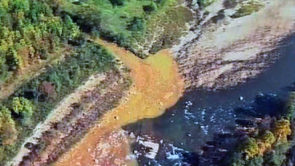
Fifteen years ago, as the Cheat started to recover, Trout Unlimited activist Bill Thorne and I stood on a high bank beside the “T & T site,” watching AMD, partially treated by the state Department of Environmental Protection (DEP), gush into Muddy Creek, the source of 40 percent of the Cheat’s acid load.
T & T Fuels Inc. owner, Paul Thomas, and his mine superintendent, Clyde Bishoff, had circumvented costs and The Clean Water Act by piping their AMD into an abandoned mine. It worked splendidly until April 1994 when the side of the mountain blew out. There was a second blowout in March 1995. The pH of Cheat Lake, 20 miles downstream, dropped to 4.
Thomas was sentenced to six months home detention and 4.5 years of probation; and both he and Bishoff were heavily fined. T & T Fuels forfeited its cleanup bond, required by the Surface Mining Control and Reclamation Act (SMCRA) of 1977.
The disaster propelled the Cheat to American Rivers’ list of most endangered rivers and inspired formation of Friends of the Cheat, a group that works to protect and improve the watershed, especially by raising money to treat AMD from bondless, pre-SMCRA abandoned mines.
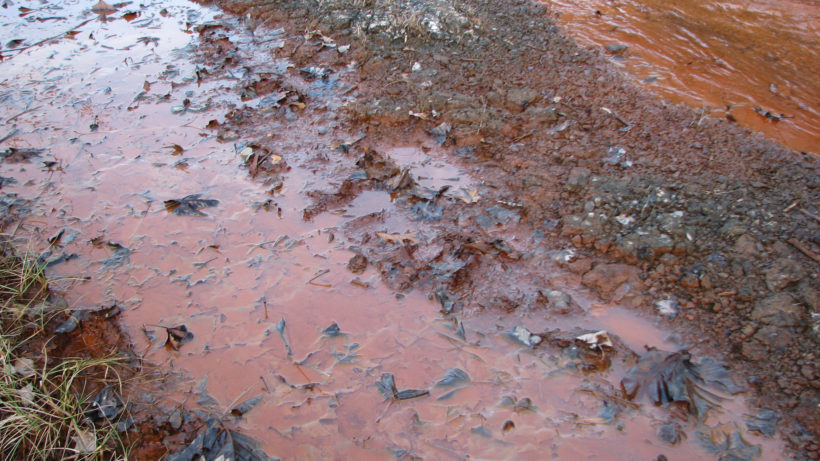
DEP’s Office of Special Reclamation took over the T & T site, doing its best with remediation. But its “best” wasn’t good enough according to a court ruling. As the new owner, DEP had to meet clean-water standards like any mine owner.
So now DEP is putting the finishing touches on a state-of-the-art, $9 million treatment facility that, with pre-dissolved limestone slurry and two 80-foot-diameter clarifiers (like you see at sewage-treatment plants), will resurrect the lifeless lower 3.4 miles of Muddy Creek, connecting the Cheat with upper Muddy’s six miles of pristine brook-trout water. And AMD from nearby tributaries will be piped in for treatment.
The iron, aluminum and manganese precipitate will be pumped from the clarifiers up into the abandoned mine.

“A Scene Beautifully Grand”
Working with 50 landowners who have voluntarily contributed their properties, Friends of the Cheat has facilitated 16 treatment projects on pre-SMCRA acid sources. Fifteen of these projects are “passive,” meaning limestone-lined channels and wetlands do the work. One is “active,” meaning a “doser,” a silo-like structure kept full of crushed limestone, automatically buffers as needed.
When Thorne and I toured the Cheat watershed in 2003 some of the passive projects were starting to fail because they were clogging with yellow boy.
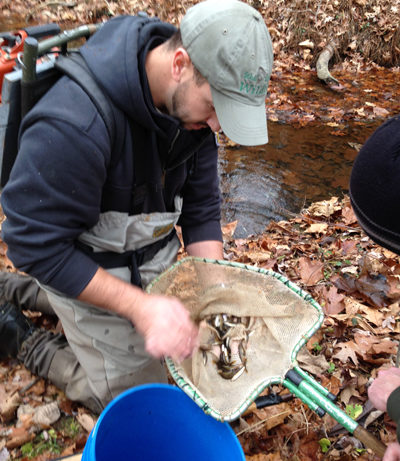
These days AMD is pushed through limestone leach beds, then sent to settling ponds that collect the precipitate. Dosers worked well then and now, but they require much operation and maintenance.
“Nowhere in all this fair land of ours has a scene more beautifully grand broken on the eye of poet or painter,” wrote Philip Kennedy in 1852 of the canyon cut by the Blackwater River. On his exploration of this Cheat headwater he reported that his party took 350 brook trout in a single afternoon.
Thorne and I were filled with hope when we inspected the passive project on Blackwater’s grossly acidified North Fork. But it wasn’t long before this three-quarter-mile limestone trench and wetland armored up with yellow boy ceased functioning. Now Friends of Blackwater is designing a modern passive project that will drop the yellow boy in settling ponds.
Five years after our visit the flow-activated limestone-grinding drum station on Blackwater’s mainstem, that partially neutralized AMD from Beaver Creek, was replaced with a more efficient doser that made the canyon better able to sustain at least hatchery trout.
And Friends has recently entered into a partnership to deal with multiple AMD seeps upstream on Beaver Creek. The group’s hydrologist, Ian Smith, believes this new treatment will allow remnant brook trout, that persist in the headwaters, to repopulate the whole flow. “Once chemical treatment succeeds,” he says, “we’ll also need to provide shade because of all the past logging.”
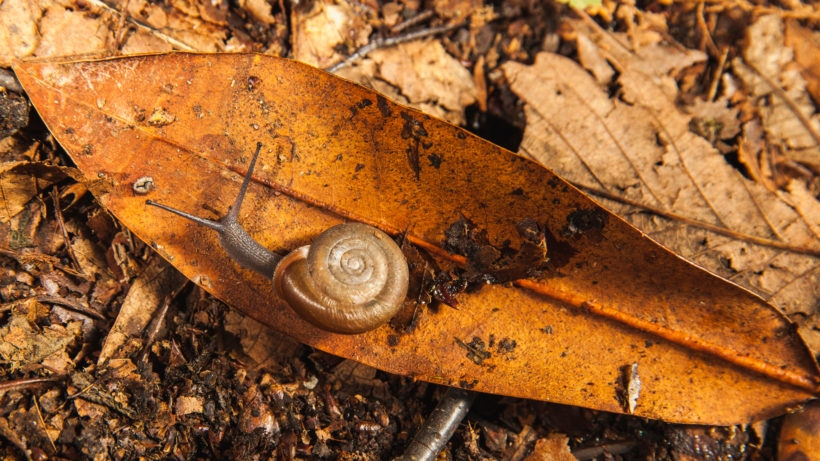
Walleyes Return
For 60 years environmentalists, anglers, hunters, birders, hikers, whitewater rafters and boaters had dreamed of protecting the 3,836-acre Cheat River Canyon, treasured for its beauty and biological richness. Early in the 21st Century this nearly happened. The state was narrowly underbid by Allegheny Wood Products, which promptly began razing the forest.
But the forest is habitat for the federally threatened Cheat three-toothed land snail. Citing Endangered Species Act violations, environmental groups sued. As settlement the defendant sold the land to the Forestland Group, an enlightened outfit committed to sustainable forestry and wildlife conservation.
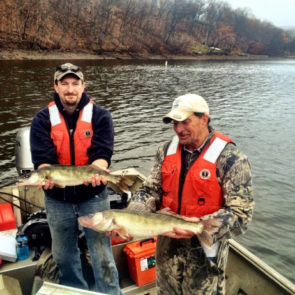
In 2014 The Nature Conservancy, the Conservation Fund and other partners acquired the property and transferred ownership to the state. The Conservancy retains 1,361 acres of the canyon as its Charlotte Ryde Nature Preserve, a stronghold for the threatened snail.
Now that timber isn’t being hacked out of the canyon, acid-producing pyrite and sandstone soils no longer bleed into the river.
Today the pH of the Cheat has increased to the point that warmwater fish abound.
Friends of the Cheat director, Amanda Pitzer, told me this: “Last week [mid-May] some friends paddled 50 miles from Parsons to Kingwood. They couldn’t keep the smallmouth bass off their lines, almost got tired of catching them. The fishery on the Cheat is amazing. We now have walleyes [especially sensitive to acid] reproducing from Cheat Lake all the way up into the canyon.”
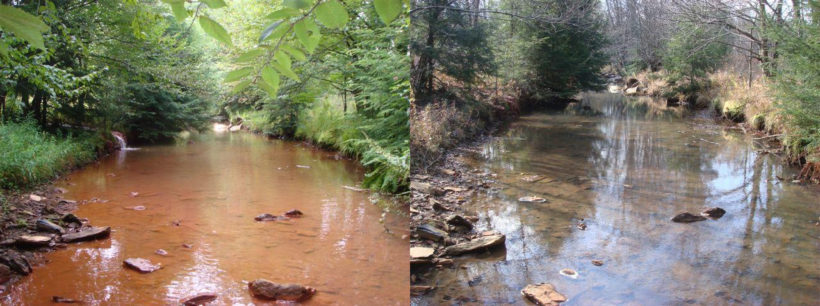
More Recovery
West Virginia’s Three Fork Creek, a Tygart Valley River tributary, is on the verge of complete recovery thanks to the combined effort of DEP’s Office of Abandoned Mine lands and Reclamation and Save the Tygart Watershed Association.
In 2010, before four dosers went in, a survey turned up one green sunfish in 12 miles of Three Fork Creek. Less than two years later, with the four dosers online and no fish stocking, a follow-up survey documented 1,605 fish representing 21 species.
A fifth doser, to be placed upstream in the watershed, will allow brook trout to navigate the mainstem and share genes with isolated feeder-stream populations.
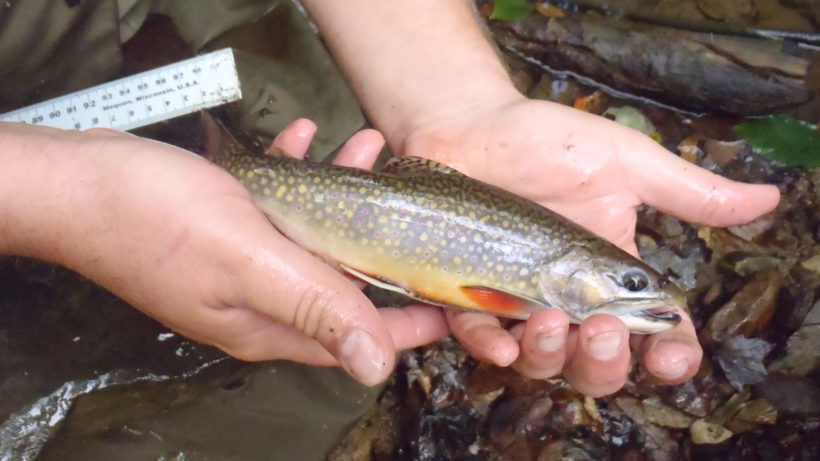
So many acid sources enter West Virginia’s Middle Fork River that neither passive treatment nor dosers are practical. So for 20 years the state DNR and the Office of Abandoned Mine Lands and Reclamation have been adding limestone sand directly to the flow at 47 sites, thereby recovering 30 miles of mainstem and 89 miles of tributaries.
“Now we have brook trout moving between tributaries,” says Rob Rice, director of DEP’s Division of Land Restoration. “Those dump sites became part of the substrate. So we’ve created an alkaline bed to the point that we don’t have to dump sand every year. We can alternate years. We’ve also been doing land reclamation to reduce the need for limestone sand.”
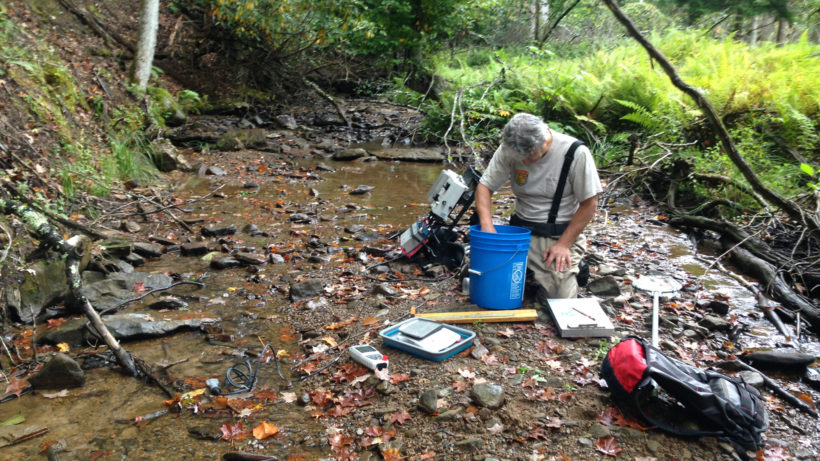
Smooth Rock Lick, which used to funnel brook trout into West Virginia’s Buckhannon River, became an AMD casualty decades ago. In 2009 a survey team led by DNR biologist Jim Walker turned up no fish. Soon thereafter the Buckhannon River Watershed Association facilitated work on a passive system.
In 2015, three years after project completion, Walker’s team found the stream teeming with creek chubs, blacknose dace, white suckers and striped shiners. The following year it electro-fished brook trout from nearby Bearcamp Run, transferring them to Smooth Rock Lick. In September 2017, the team found young-of-the-year brook trout.
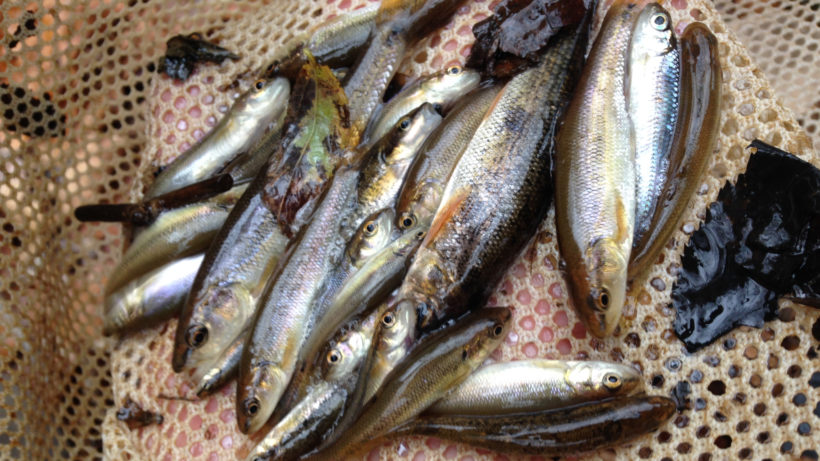
Much of the Susquehanna River system is polluted with AMD, but good things are happening there as well.
Among the more impressive success stories is the resurrection of Pennsylvania’s Bear Run.
Tom Clark coordinates AMD work for the Susquehanna River Basin Commission — an interstate body, with representatives from New York, Maryland, Pennsylvania and the federal government, that manages environmental stewardship and economic development on river and watershed. He offers this: “We’ve completed nine treatment projects on 15 miles of Bear Run and done some major land reclamation.”
Bear Run remediation was especially challenging because different types of runoff, required different treatment. Higher in the watershed runoff had decent pH but was loaded with iron, necessitating settling ponds and wetlands. Further downstream AMD was contaminated with aluminum, necessitating limestone beds. Further downstream still AMD was bad enough to require dosers.
“The South Branch had been devastated,” reports Clark. “So we put eight of our nine projects there — two aerobic wetlands, three limestone drains, two silos [dosers] and land-reclamations, planting oaks, cherries, maples and blight-resistant chestnuts from American Chestnut Foundation. After we got water quality pushed up in South Branch, North Branch brook trout moved in and repopulated the entirety of Bear Run.”
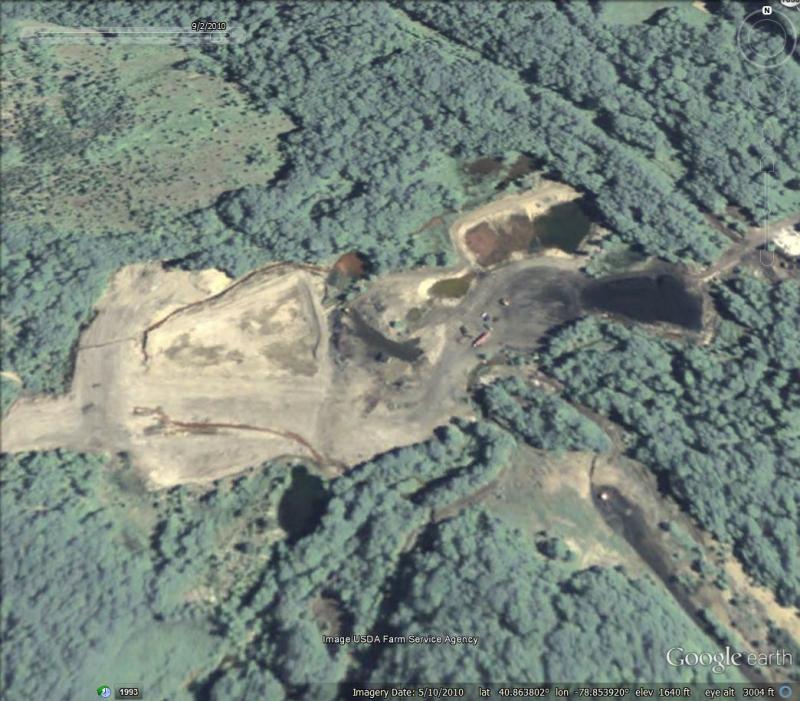
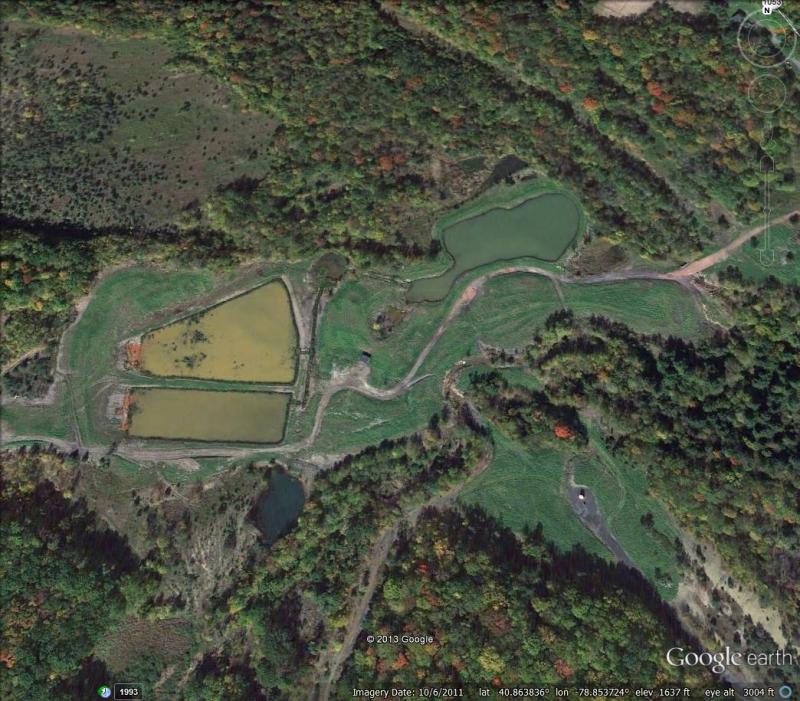
Fifteen years ago I could not have imagined the amount or quality of AMD remediation that has occurred in Appalachia.
Still, all is not well there. For example, about 2,500 miles of AMD-impaired stream remain in West Virginia, 3,000 in Pennsylvania.
As Churchill, declared after the British ran Rommel out of El Alamein, “This is not the end, this is not even the beginning of the end, this is just perhaps the end of the beginning.”
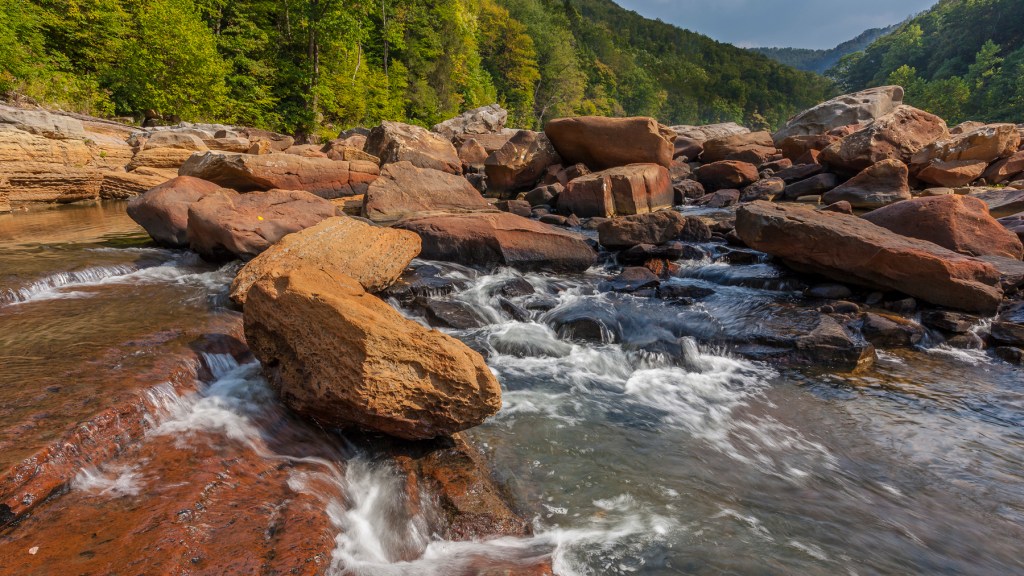



Hello,
My wife and I often ride the Ghost Town Rail Trail in south central Pennsylvania. It follows the course of the Blacklick Creek. The creek would be beautiful if it were not for the fact that it is completely lifeless due to cola mine run off. There are some remediation efforts which have been underway for some time but they ave not resulting in returning life to the creek.
Would the methods that were used for the rivers/streams you discuss in your article be successful for the Blacklick? Also, there are a number of other rivers/streams/creeks all throughout Pennsylvania’s legacy coal country which have the same problems and needs as the Blacklick. Please let me know your thoughts.
Hi Daniel:
Blacklick is on the mend. Recovery was evident seven years ago when fish started to return. Fish and Boat Commission biologists found eight species, including bluegills, catfish, rock bass and smallmouth bass.
If you haven’t already done so, get involved with the Blacklick Creek Watershed Association:
email: bcwapa@gmail.com
724 349-9474
This from the Association:
BCWA is committed to reduce the effects of AMD in the watershed. The Association has completed 13 mine drainage treatment and reclamation projects in the Blacklick Creek watershed.
Through the funding of Pennsylvania Growing Greener Grant, EPA 319 Grants, Indiana County Conservation District Grants, and grants from private industry, BCWA has constructed passive treatment systems along Coal Pit Run, South Branch Two Lick Creek, Two Lick Creek, Laurel Run, and Yellow Creek.
There are other positive things happening within the watershed. Indiana County Conservation District has installed a lime doser at the Lucerne 3A mine site. The Army Corp of Engineers has constructed a large passive treatment system at the Webster Discharge.
Work continues on the reclamation of abandoned mine lands. There are seven major refuse piles within the watershed.
Re-mining of the Revloc refuse pile has been completed and re-mining of the Beth Energy Mine 31, Colver Mine, Loraine Mine, and Lucerne Mine refuse piles continues. There are only two refuse piles to be re-mined, Vitondale and Tide.
One of the most exciting developments is that the Pennsylvania DEP has proposed to construct a treatment plant at the Wehrum discharge. This will treat two of the larger discharges in the Blacklick Creek watershed.
What a great article and sooo encouraging, Thanks
Great progress and good news for a change. At age 60, I have trouble sleeping at nights due to on-going refusal of humans to look closely at the main culprit of environmental degradation and massive losses of biodiversity, which is, quite simply, Human Over-population, which drives bad decisions and short term solutions to meet current demands.
World Biomass study published in the May 2018 Proceedings of National Academy of Sciences puts human impacts (mostly due to over-population and related mismanagement) at levels far higher than previously known.
96% of all remaining Mammals (by weight) are Humans and Livestock, only 4% of Mammal biomass is WILD Mammals, and that includes marine Mammals and all land Mammals combined.
Fish biomass is half its pre-human levels. Plants are half the biomass of pre-human levels.
Gains in restoration are fantastic, but if humans continue to rise in numbers, the gains will be wiped out in the future. Very low birth rates are what we need, and we need World-wide conversations that are humane and fair to heavily pressure people to have Zero or 1 child per couple. What is left of nature could then recover over the next 100 years. If we refuse to address the CORE and PRIMARY driver of environmental destruction (which is Human Over-population), then we may win some battles, but we will lose the war.
My Mom had 5 kids, and my parents came from generations of huge families. I decided I had to reverse the trend. I had ZERO kids due to seeing the last of Wild California disappear under housing, roads, and agriculture.
Future generations will either NOT know nature at all, or will be furious at how we stole all of nature from them.
Julie Fisher
Encinitas, CA
760-214-1109
What you’ve done there is wonderful. Now what can you do for the Indian River Lagoon and St Lucie River in Florida?
I really enjoyed your article. Thanks for the ‘schooling’ on the progress and methods of clean-ups.
It isn’t just the extractive industries; it also is those that burn the coal. I found this article via a link in a Nature Conservancy emailing to members about a handful of current topics. It is doubly interesting because I have recently learned about the horrid condition of a branch of the Vermilion River near Danville, Illinois. I remember 1970s canoeing what later became a National Scenic River, but my niece who still lives nearby and a Chicago Tribune article say leach from the coal-ash pits left by a defunct power plant have made the water unfit to go near.
http://www.chicagotribune.com/news/ct-met-illinois-scenic-river-coal-pollution-20180130-story.html
Good article-but the photo of the fish in the net (above) that came right after comments of brook trout being found in 2017 are primarily chubs. I don’t doubt your word that trout were found. But misleading photos or inaccurate text are fodder for the naysayers to say everything in the article is “fake news”. Please clarify in the caption that accompanies the photo or show one with trout in it. I support The Nature Conservancy and I don’t want anyone to be able to damage its reputation by referring to a photo gaff.
Hi Mark:
Thanks for supporting TNC and its reputation. Not sure how the photo was “misleading” or a “gaff.” It was correctly captioned “Fish at Smooth Rock Lick after passive treatment.” These fish arrived on their own without human intervention and because of that passive treatment. And, while chubs were present in the sample, there were also blacknose dace, white suckers and striped shiners. The brook trout arrived because of translocation. As I noted in the text, two years after the sample the team electro-fished brook trout from nearby Bearcamp Run and released them in Smooth Rock Lick.
Boy, I’d like to STOP those coal mines in each of those 15 states mentioned above and I would like to STOP that armored sediment you spoke about.
Not interested in coal for energy or a fuel tomorrow or in the future.
Very informative article!
Gives me hope that just maybe our natural habitat can be saved & repaired! Without water – there is no life.
One more reason why we should be getting off these dirty fuels that are ruining our air and water quality and are the reason our planet is heating up. We needed fossil fuels at one time, but renewable energy is our future and we need to get on with it ASAP.
Wonderful read.
This story is wonderful. Thank you for this well-described success, and thanks even more for the hope.
Forty years ago, I spent a couple of weeks alone in the cabin of a rural western Pennsylvania landowner. The forest was amazingly beautiful, but the creek was horribly sick, fishless and almost lifeless and thickly coated with orange and yellow. I didn’t know what was wrong. Now I do. Thank you to all the varied “doctors,” from landowners to scientists, who are restoring life to these waterways.
Great news! If only we could get stream clean up programs like this going on every stream that has been debilitated by extraction industries.
Interesting story. Restoration is an imporant activity.